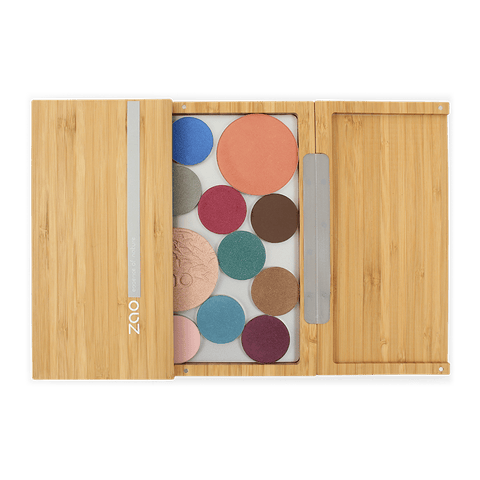5 Ways you can Reduce Plastic in your Makeup

The beauty industry as a whole still has a long way to go to reduce their impact on the environment. This all starts with demand…if we actively stop buying products packaged in plastic, companies will get the message FAST and look at ways to cut back. The shift has already been seen amongst some of the well known brands, with many of them now offering free recycling incentives in store, or using post consumer waste to create their packaging.
But is this enough? Should we be cutting out plastic all together? Many cosmetic companies will choose to package their cream or liquid makeup products in plastic due to hygiene reasons and to keep the ingredients as fresh as possible to avoid the risk of mould or bacteria growing in the product. There is also the efficacy of the packaging to take into account. Many of us love to use liquid foundation with a plastic pump as its easy and clean to use, or concealers packaged in plastic tubes with a sponge applicator. But this produces more waste that is hard to recycle and will often end up in landfill.
Packaging options are still limited when it comes to makeup specifically. But there are ways you can reduce plastic in your makeup routine with a few simple changes, and an open mind to new textures, formulas and ingredients.
Here are our top 5 ways you can reduce plastic in your makeup routine:
1. Refillable products
Refillable options are such a good way to reduce plastic in your makeup. Brands such as Kjaer Weis and ZAO Makeup offer fantastic refillable options that reduces the amount of packaging overall. Kjaer Weis offer cream or powder based products that are packaged in a metal compact with the refill options packaged in a simple metal pan and fully recyclable and lightweight cardboard. ZAO Makeup use sustainable bamboo for their outer packaging, and package their pressed powder refills in a cardboard slip. For now, their mascara, foundation and lipstick refills are still packaged in plastic due to these being a cream/liquid formula, but ZAO are actively looking at ways to change this.

2. Cardboard Packaging
It’s lightweight, meaning less carbon emissions during transportation and fully recyclable amongst most local councils. So long as the cardboard has been sourced from sustainably managed forests, it is definitely a brilliant option for makeup packaging. NUI Cosmetics have just released their brand new bronzers and highlighter powder packaged in fully recyclable cardboard packaging that has been made in Berlin, Germany, rather than China, meaning less air miles! The bio printing inks they use are also climate neutral, mineral oil and solvent free, as well as being vegan. Double points for NUI Cosmetics!

3. Create your own palettes
As a self confessed beauty addict, my makeup bag is usually bursting full of products that I am using on rotation. The downside is that usually means lots of packaging that needs to be recycled, taken to a Terracycle recycling point, or unfortunately, thrown away. Creating your own palettes with several products in one place not only saves space in your makeup bag, but will also significantly reduce the amount of outer packaging you will need to dispose of. Sappho offer cardboard palettes that you can use with any of their eyeshadows, blushers or bronzers, and provides a lightweight alternative that you can customise depending on the products you need that day. They are also particularly useful for holidays when baggage weight limits and space saving are of upmost importance!

4. Natural and biodegradable ingredients
The packaging is often the first thing that is considered when reducing plastic in your makeup routine. But did you know that you will actually be able to find micro plastic in the ingredients of your makeup too? Common ingredients that are found in makeup products that are in fact a type of micro plastic are shown on the label as – Nylon, Polyethylene, Dimethicone, and many others. A great resource for checking if there is any micro plastic in your cosmetics is Beat the Microbead. The best way to avoid these ingredients is to familiarise yourself with the ingredients in your makeup, and use products with natural, organic ingredients instead. Ingredients sourced from nature, rather than synthetic chemicals produced in a lab, will biodegrade in the environment rather than hanging around for thousands of years. I’m sure we are all aware of the banning of microbeads, but it is just as important to avoid these ‘invisible’ microplastics that end up in our waterways and leach into our soil and vegetation.
5. Makeup brushes with a wooden handle.
Don’t forget to consider the tools you are using when reducing the plastic in your makeup bags. Makeup brush handles are often made of plastic and hard to recycle so will likely end up in landfill. There are plenty of makeup brushes on the market that now have handles made from sustainably sourced wood (see brushes from Gressa), or biodegradable corn resin (see Ere Perez). Remember to take apart the brush and recycle the aluminium separately.


 KoR Skin Care - Rejuvenation Oil
KoR Skin Care - Rejuvenation Oil 


